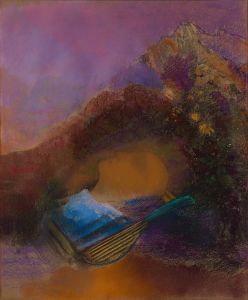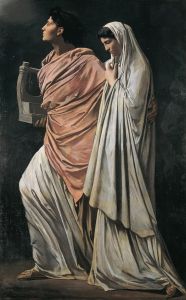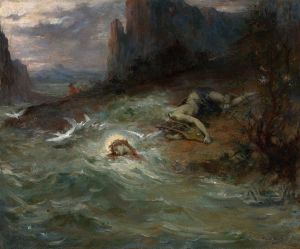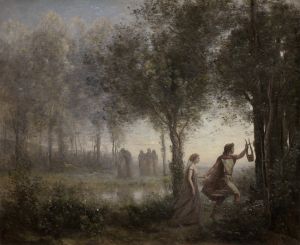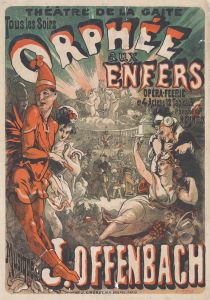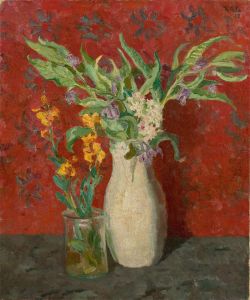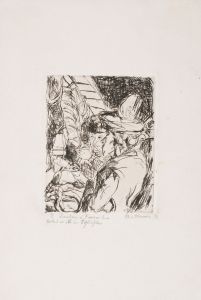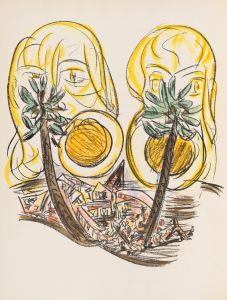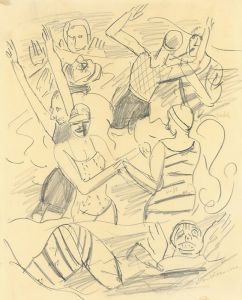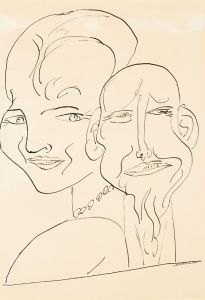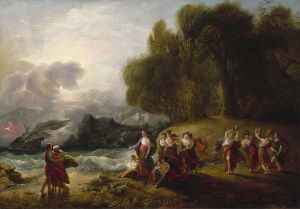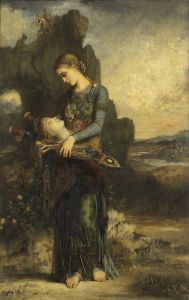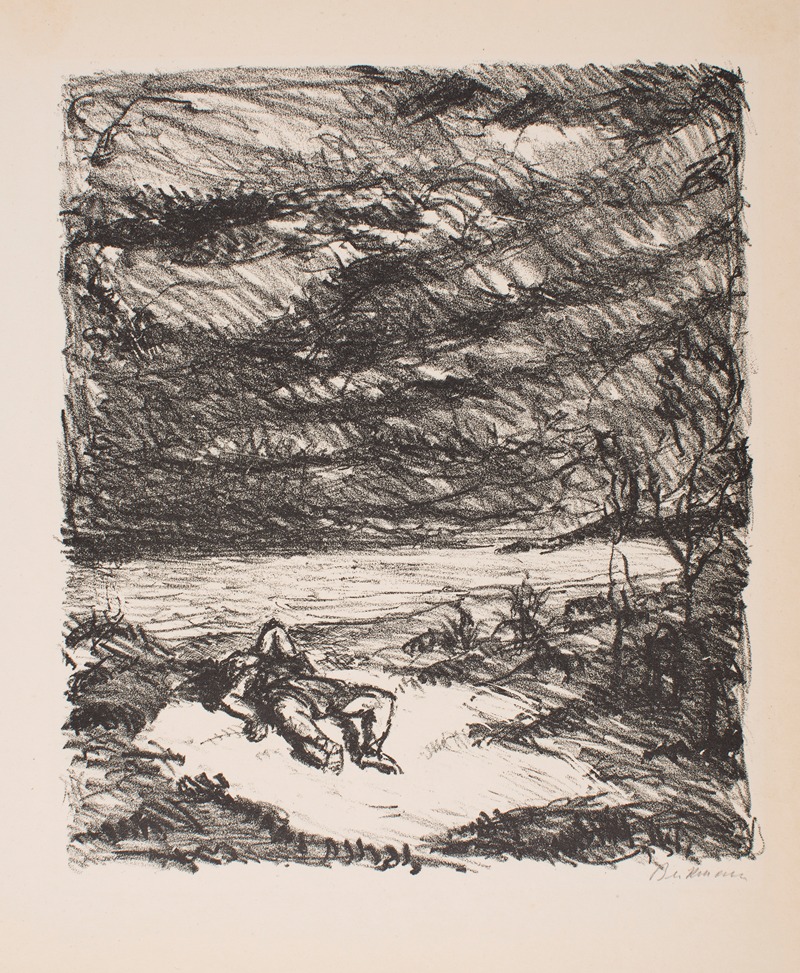
Orpheus at the Shore I, Plate 2 from the series ‘The Return of Eurydice, Three Cantos’
A hand-painted replica of Max Beckmann’s masterpiece Orpheus at the Shore I, Plate 2 from the series ‘The Return of Eurydice, Three Cantos’, meticulously crafted by professional artists to capture the true essence of the original. Each piece is created with museum-quality canvas and rare mineral pigments, carefully painted by experienced artists with delicate brushstrokes and rich, layered colors to perfectly recreate the texture of the original artwork. Unlike machine-printed reproductions, this hand-painted version brings the painting to life, infused with the artist’s emotions and skill in every stroke. Whether for personal collection or home decoration, it instantly elevates the artistic atmosphere of any space.
Max Beckmann's "Orpheus at the Shore I, Plate 2" from the series "The Return of Eurydice, Three Cantos" is a notable work by the German painter and printmaker, Max Beckmann. Beckmann, born in 1884 in Leipzig, Germany, is recognized for his contributions to the Expressionist movement, although he himself rejected the label. His works often explore themes of human suffering, mythological subjects, and the complexities of modern life.
"Orpheus at the Shore I, Plate 2" is part of a series that delves into the myth of Orpheus and Eurydice, a popular subject in Western art and literature. The myth tells the story of Orpheus, a legendary musician, poet, and prophet in ancient Greek religion and myth, who attempts to bring his wife Eurydice back from the underworld. Beckmann's interpretation of this myth is both personal and reflective of the broader human condition, a common theme in his oeuvre.
The series "The Return of Eurydice, Three Cantos" consists of three plates, each depicting different moments or interpretations of the myth. Beckmann's choice to focus on Orpheus at the shore suggests a moment of transition or boundary, a place where the earthly and the otherworldly meet. This setting is significant as it symbolizes the liminal space between life and death, a recurring motif in Beckmann's work.
Beckmann's style is characterized by bold lines, dramatic contrasts, and a strong sense of composition, all of which are evident in "Orpheus at the Shore I, Plate 2." His use of these elements helps convey the emotional intensity and existential themes present in the myth of Orpheus and Eurydice. The figures in Beckmann's work often appear introspective and isolated, reflecting the artist's own experiences and the turbulent times in which he lived.
During the period when Beckmann created this series, he was living in exile, having fled Nazi Germany due to the regime's condemnation of his work as "degenerate art." This context adds a layer of depth to the interpretation of the series, as themes of loss, exile, and the search for redemption can be seen as paralleling Beckmann's own life experiences.
The series was created using the technique of drypoint, a printmaking process that involves incising an image onto a plate with a hard-pointed needle. This technique allows for a range of expressive lines and textures, which Beckmann expertly employs to enhance the emotional and narrative depth of the work.
"Orpheus at the Shore I, Plate 2" and the entire series "The Return of Eurydice, Three Cantos" are significant not only for their artistic merit but also for their exploration of timeless themes through the lens of Beckmann's unique perspective. The work stands as a testament to Beckmann's ability to blend mythological narratives with personal and universal themes, creating art that resonates on multiple levels.
In summary, Max Beckmann's "Orpheus at the Shore I, Plate 2" is a profound exploration of the Orpheus and Eurydice myth, rendered with Beckmann's characteristic style and emotional depth. It reflects both the artist's personal experiences and broader existential themes, making it a significant piece in the study of 20th-century art and Beckmann's body of work.





